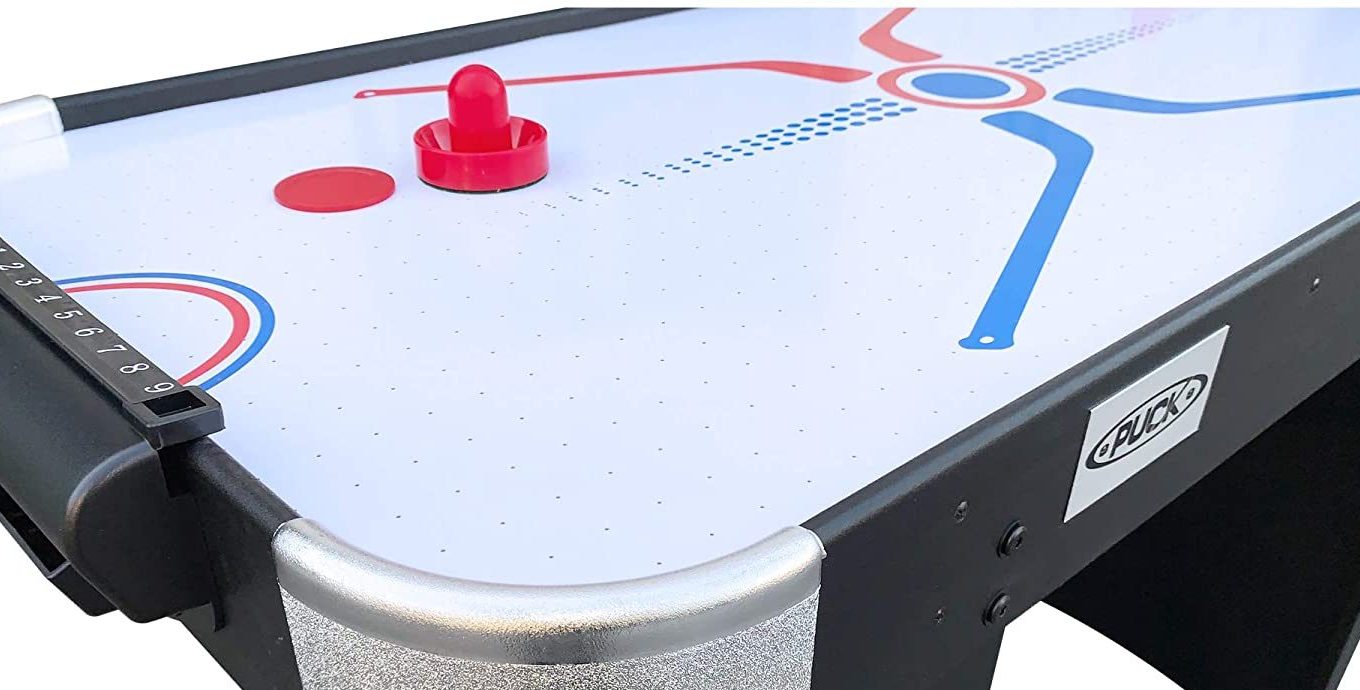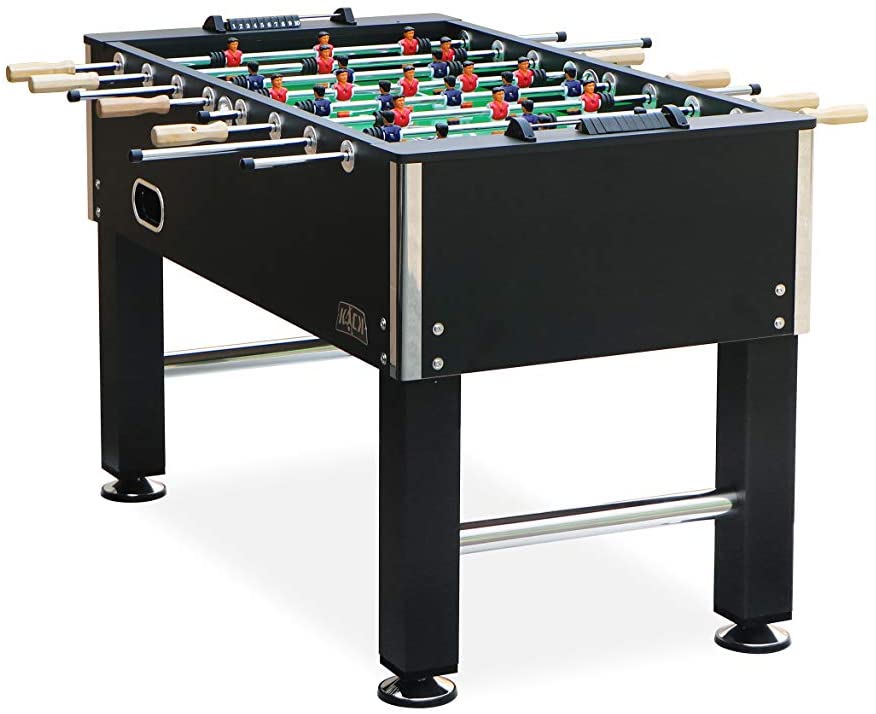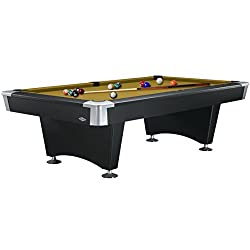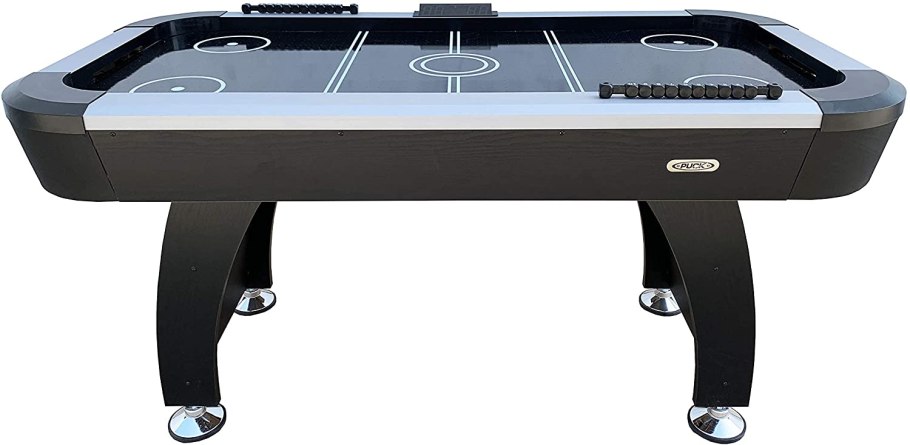How To Play Air Hockey By The Professional Rules
Contents
How To Play Air Hockey
Air hockey! Who doesn’t like the adrenaline rush playing air hockey? It’s one of those arcade games that everyone enjoys. Although it’s quite common to see air hockey tables in arcades and bars, only the fortunate few have them in their homes.
If you play once in a while, you may not factor in the rules as much. Who cares?! Just have fun!
But, if you’re lucky enough to have an air hockey table in your house, that means you might be serious about this sport, and it’s important to understand the rules.
Ever wanted to know how to play air hockey the right way? You’re in luck. We’re breaking down the terminology of air hockey accessories and air hockey rules.
Game On!
Before you play the game, there are some formalities to get out of the way. A coin toss starts the game to decide:
- Who starts with the puck
- The side of the table each player starts on
The winner of the coin toss begins with the puck on all odd-numbered games (1, 3, 5, and 7) from one through seven. The opponent will start with the puck on all even-numbered games (2, 4, and 6). The winner is the player who wins the best of seven games.
How To Play Air Hockey Like A Pro? Play By the Rules the Professionals Use!
- Each player gets one mallet or pusher. The player holds their mallet in one hand to push or strike the puck.
- The player can strike the puck with any part of the mallet or pusher. The puck can never be “topped.” This is a term for when a player picks up their mallet to stop the puck. The game uses only one puck on the playing surface.
- Players with the puck serve. A player can have possession of a puck when they start the game or after they get scored on.
- Players have to stay on their side of the center-line. Players cannot cross over the center line with their mallet or any other part of their body.
- After each game, the players switch or alternate sides. It keeps the game interesting.
- Each player gets one time-out per game. A time-out should last no longer than ten seconds. Additionally, a time-out is only called when the player has the puck. A second time-out is only called in the event of an injury.
How to Know When You’ve Scored a Point
The player who scores seven goals first is the winner. Nonetheless, if you’ve ever played the game of air hockey, you know there are always a few questionable goals.
So how do you know when someone has scored an official goal?
A score doesn’t count if the puck:
- Enters the goal but doesn’t tilt. The opponent has two choices. They can hand the puck back to the player who shot the puck. For a more professional way, the player can try to shimmy the puck out of the goal.
- The puck rebounds back out of the mouth of the goal. Sometimes players put a little too much behind their shot. The end result is a puck that comes in a little bit too hot and bounces back out.
- The puck enters the goal when the opponent gets distracted. You’ve seen these people. You may be one of them. By the official rules, it doesn’t count. Bring out your athletic spirit, and tell your friends.
- The puck enters the goal during time-outs. This is not an usual part of a casual family/friends game, but you still need to know it. Normally each player has one chance to call for time-out, and maximum 10 seconds. In order to do this, you must have the possession of the puck at this specific moment. Since you’re both in a time-out, any scores happened during the short period of time doesn’t count.
A score counts when:
- The puck tilts in towards the goal after a player tries to stop it. Some players will try to say that it didn’t go in all the way. By official rules, if it tilts inward, it’s a goal.
- The puck rebounds and hits the opponent’s mallet, then enters the goal. Don’t you hate it when this happens? Even so, it’s still a goal.
- The puck hits an opponent’s hand but the puck looks like it will go in. Everyone has played with that guy who keeps their arm flat to the table. C’mon, man! That’s a no-go!
- The puck gets hit before the table loses power. It may be a weird rule, but hey, all games have at least one, right?
Some tricky moments when a score counts:
- When the puck gets stuck in the goal and the player has lost their mallet (slipped out of their hand). The opponent cannot shimmy the puck out with their hands or body. In that instance, the shot counts as a goal.
- When a player takes a shot then loses their mallet, and the puck enters their own goal. While this is unfortunate, it’s a goal for the opponent. The good news is, in this case, you can try to stop the puck with your hands.
When a Puck Counts as Out of Play
The puck is in play whenever it is moving on the table. Simple, right? So when is a puck considered out of play?
Here are a few examples:
- When the puck touches your clothing, hands, or anything else but the table, rails, or mallets, it’s out of play.
- If the puck skims the top of the guard rails, even for a second, the puck is out of play.
- Whenever the puck leaves the playing surface of the air hockey table.
Know Your Penalties and Fouls
Any time you receive a penalty for a foul, you lose your turn to the opponent, and they get a free shot! Whoa! Don’t make these mistakes:
- Going over the center-line. That includes reaching for the puck past the center-line.
- Charging the puck. That’s when you hit the puck too hard so that it leaves the playing space.
- Topping the puck. You know those people who stop the puck with the mallet by placing the mallet on top of the puck? Those people are toppers. Let them know you get a free shot!
- Goal-tending to stop a puck. You know these types. They leave their whole arm in front of the goal and then say, “What?” That’s goal-tending. You get a free shot. That’ll teach ‘em.
Play Like the Professionals
Now that you know how to play air hockey and all the air hockey rules, you can play like the pros. So go get your friends together and have some fun!
Ready to upgrade your home gaming room with an air hockey table? Check out our buying guide to find out how to pick the right air hockey table for you home game room!
You might also be interested: Air Hockey Or Foosball Table? Which One To Buy?


 (4.8 / 5)
(4.8 / 5)

